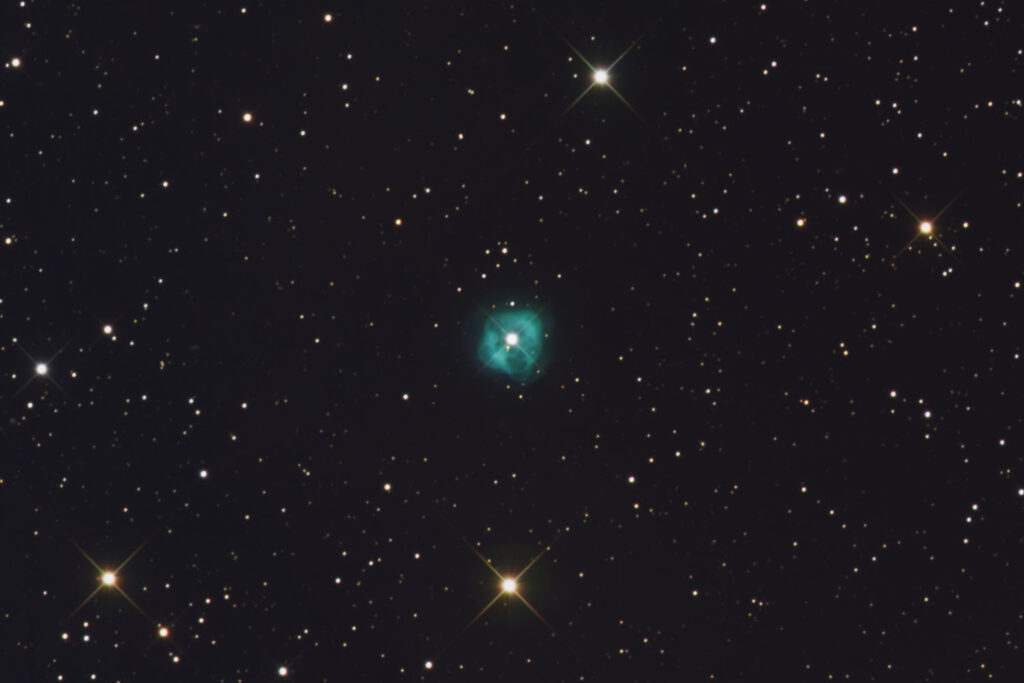NGC 1514
Planetary Nebula, Taurus
- Description
- Technical
- Links
NGC 1514 is a planetary nebula in the zodiac constellation of Taurus, positioned to the north of the star Psi Tauri along the constellation border with Perseus. Distance estimates for this nebula vary widely, with a range of 650–980 ly (200–300 pc) considered the most plausible.
It was discovered by William Herschel on November 13, 1790, describing it as “a most singular phaenomenon” and forcing him to rethink his ideas on the construction of the heavens. Up until this point Herschel was convinced that all nebulae consisted of masses of stars too remote to resolve, but now here was a single star “surrounded with a faintly luminous atmosphere.” He concluded: “Our judgement I may venture to say, will be, that the nebulosity about the star is not of a starry nature.”
This is a double-shell nebula that is described as, “a bright roundish amorphous PN” with a radius of around 65″ and a faint halo that has a radius of 90″. It consists of an outer shell, an inner shell, and bright blobs.[8] An alternative description is of “lumpy nebula composed of numerous small bubbles” with a somewhat filamentary structure in the outer shell. Infrared observations show a huge region of dust surrounds the planetary nebula, spanning 8.5 ly (2.6 pc). The combined mass of the gas and dust is estimated at 2.2±1.4 M☉
The nebula originated from a binary star system with the designation HD 281679 from the Henry Draper Catalogue. The bright, visible component is a giant star on the horizontal branch with a stellar classification of A0III, while the nebula-generating companion is now a hot, sub-luminous O-type star. During the formation of the nebula, the pair shared a common envelope and had an orbital period of around 4–9 days. The progenitor star had a mass estimated at 4.5 times the mass of the Sun. When the progenitor entered its early-asymptotic giant branch phase and expanded to fill its roche lobe, mass transfer occurred and the pair spiraled inward by transferring their orbital energy into the expanding envelope.
Telescope: ASA N16 f3.6
Mount: Astro Physics 1200GTO
Camera: SBIG STL-11000M
Guider: SBIG STL-Remote/BorgMini50
L: 12×5 mins = 60 mins, R: 12×5 mins = 60 mins, G: 12×5 mins = 60 mins, B: 12×5 mins = 60 mins
Total Imaging Time: 4h 00m
Data Imaged remotely over 2 nights during November 2008.
Data acquisition & Processing by David Churchill.
None

